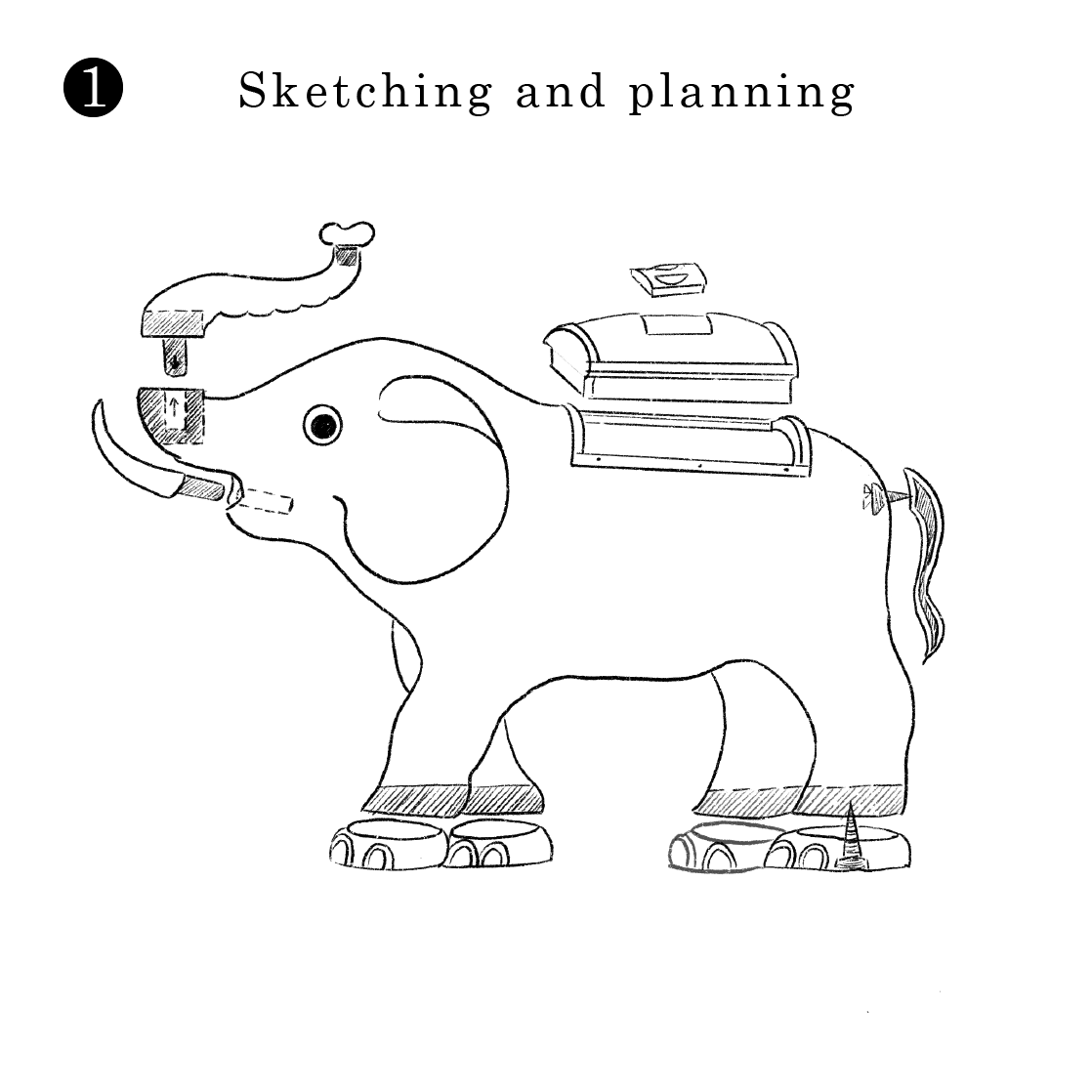The Story of Chinese Wicker Animals
Origin of Bamboo Wicker Animals
Bamboo wicker animals emerged in the late 1960s in Shengxian County, Zhejiang Province (now Shengzhou). In 1965, Yu Zhanggen, a skilled bamboo weaving craftsman and the leader of the innovation team , from the Shengxian Artistic Bamboo Weaving factory, noticed the keen interest of several foreigners in porcelain animals during a visit to Hangzhou. This inspired him to conceive the idea of using bamboo strips to weave animals. With the collaboration of other craftsmen in the team, the first bamboo wicker animal, an elephant (serial number 98), was created in a week. The initial response to the first elephant was significant, marking a breakthrough in the field of bamboo weaving.

Above: The first wicker animal designed and created is an elephant ( serial #98)
Despite this success, Yu Zhanggen believed that the crafting of bamboo wicker animals could be improved, especially in emphasizing the expressions of the animals. In the spring of 1966, Yu Zhanggen and the team successfully created the second animal: a rooster (serial number 336). The rooster marked the true birth of bamboo weaving animals. Recorded varieties of bamboo weaving animals number in the hundreds, with many different animal shapes complementing various everyday items.

Selection of Bamboo Woven Animals
Shengxian Artistic Bamboo Weaving Factory places a strong emphasis on product innovation. Within the bamboo weaving factory, there is an innovation team consisting of 25 skilled bamboo craftsmen, including Yu Zhanggen. Each team member typically designs and produces six to eight pieces of artwork annually. The innovation team selects animal figures after understanding the customer's culture. For example, in the United States, owls are highly favored, while in Japan, turtles and koi symbolize good luck. Therefore, craftsmen design a variety of bamboo weaving animals based on the different needs of customers.
In addition, the innovation team visits the Hangzhou Zoo to observe the forms of animals, aiding in their creative process. Samples created by the innovation team are sent to the provincial import-export company for selection. The chosen pieces are retained, while those not selected are returned to the bamboo weaving factory. When foreign customers place orders with the provincial company, the import-export company informs the bamboo weaving factory about the required production quantity and delivery time.



The Story of Wicker Animals
Bamboo wicker animals emerged in the late 1960s in Shengxian County, Zhejiang Province (now Shengzhou) of China. The first bamboo wicker animal ever made was an elephant....

The Making of Wicker Animals
The process of crafting bamboo wicker animals involves five steps and is considered a comprehensive art form in the field of bamboo weaving....
The Labels of Wicker Animals
Despite the labels indicating Shanghai Handicrafts, Chinese wicker animals are not made in Shanghai.Instead, they are designed and crafted by bamboo weaving craftsmen in Shengxian County, Zhejiang....
